|
History of Bolivia: Colonial History Bolivia's Colonial Era 1500-1800 A.D. Bolivia's history changed dramatically when in 1532 the Spanish defeated the great Incas, and other ethnic groups that had historically inhabited the area. The Incas were so severely weakened by European diseases brought over by the Spaniards that they were unable to properly defend themselves and were conquered by an army of about 180 men led by Francisco Pizarro.
The Spaniards were interested primarily in the silver mines discovered in the area and exploited the region and its inhabitants mercilessly, forcing them to work as slaves to extract massive amounts of minerals for export to Spain over the next 300 years. Because of this, Bolivia's society was, and four centuries later continues to be, largely stratified with clear differences and wide gaps between the impoverished indigenous class (which comprise roughly two-thirds of the population) and the wealthy, lighter-skinned European upper class.
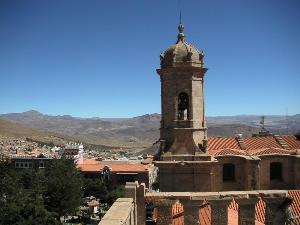
Interestingly, the city of Potosí, where the Cerro Rico (Rich Mountain) is located, was the largest city in the Western Hemisphere during the colonial era and at this same period in history, it was also the most populated city in the world. This mountain was mined for silver and tin for over 500 years (until roughly 1984). Potosi was also home to the Spanish Empire’s regional Casa de la Moneda, or mint – where silver was converted into coins. The silver mines found in Potosi are the largest ever found in the Western Hemisphere. They became a major commercial hub of the Spanish colonies and resulted in the colonization of the entire stretch between Cuzco, Peru and Potosi, Bolivia. The cities of La Paz, Sucre and Santa Cruz were all established during the colonial era, prior to 1560.
Sucre is still the constitutional capital of Bolivia, however La Paz is more commonly referred to as Bolivia’s capital because it where the seat of government is located. Bolivia may be one of the only countries in world history to have two stars on its map although per the Bolivian Constitution, La Paz is not a capital city.
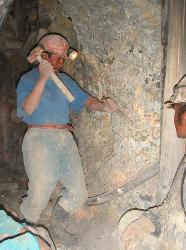
The Spanish did little more to develop the region during the colonial era aside from constructing the necessary facilities to transport the minerals they extracted. Furthermore, because the western region of Bolivia is so rugged, cold, and high, the region was not developed economically. Indigenous people, who still make up the majority of the population of Bolivia today, have been forced to live in deplorable conditions throughout Bolivia's entire history, working in the mines (photo) and as laborers in agriculture. They were given very little or no education, had no access to economic opportunities, and were unable to participate politically. It is interesting to note, however, that due to Bolivia's geographically isolated position, indigenous groups here were not as hard hit by European diseases as native peoples in other regions whose numbers were severely dessimated due to the diseases they were unaccustomed to. This may be one of the reasons people of indigenous descent still comprise nearly two-thirds of Bolivia's population today. In addition, few African slaves were brought into the region that is Bolivia today during the colonial era because there was a large enough indigenous population to use as labor in the mines, whereas African slaves were taken to coastal regions, especially in Brazil. The descendants of the few African slaves that were brought over, now inhabit a small are north of La Paz near Coroico and are called "Afrobolivianos". With the arrival of priests from the Jesuit order, who established missions throughout an extensive portion of South America, self-sustainable communities were created. The Jesuits set up a system of obrajes (textile mills) and taught the natives to create and play typical baroque-style European musical instruments. Today, visitors can take a historical tour of an entire circuit of towns known as the
Jesuit Missions
to view the baroque-style architecture of these old mission churches, many of which remain intact and have been restored.
More importantly, as a result of this, a new mixed race developed: the mestizos (of mixed European and indigenous descent). They neither benefited from full European stature, nor were they completely excluded as were their indigenous ancestors. They did, however, become increasingly discontent with their lack of social and economic inclusion. In addition, during the Napoleonic Wars in Europe, sentiment against colonial rule increased, leading to another major change in Bolivia's history. Read about that in our Post-Colonial history section now. Now read about the Post-Colonial EraBolivia's Ancient (Pre-Colonial) History Pando La Paz Oruro Potosí Chuquisaca     |
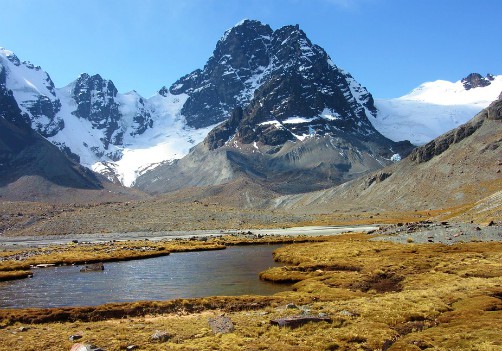
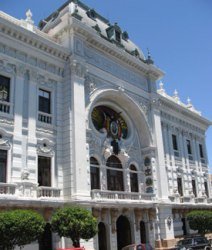 The area covered by what is known as Bolivia today was historically a part of the Viceroyalty of Alto Peru (Upper Peru - also known as Charcas – and established by the Spanish in 1538), which was governed by the Viceroy of Lima (appointed to this post by the ruler of Spain). Locally the area now known as Bolivia was governed from La Plata in the region known as Chuquisaca (today, this is the city of
The area covered by what is known as Bolivia today was historically a part of the Viceroyalty of Alto Peru (Upper Peru - also known as Charcas – and established by the Spanish in 1538), which was governed by the Viceroy of Lima (appointed to this post by the ruler of Spain). Locally the area now known as Bolivia was governed from La Plata in the region known as Chuquisaca (today, this is the city of 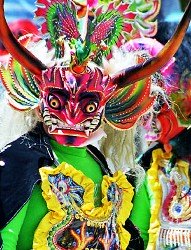 Throughout the next three centuries, the histories of the Spanish and indigenous cultures and races became intricately entwined. Throughout the colonial era indigenous groups, forced to accept the Roman Catholic religion, simply assimilated it into their native beliefs continuing to worship their own deities along with the God and saints of the Catholic religion. You can read more about that on our
Throughout the next three centuries, the histories of the Spanish and indigenous cultures and races became intricately entwined. Throughout the colonial era indigenous groups, forced to accept the Roman Catholic religion, simply assimilated it into their native beliefs continuing to worship their own deities along with the God and saints of the Catholic religion. You can read more about that on our